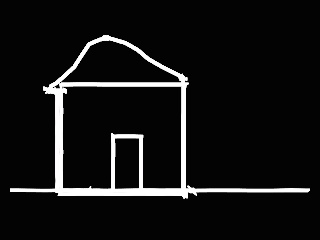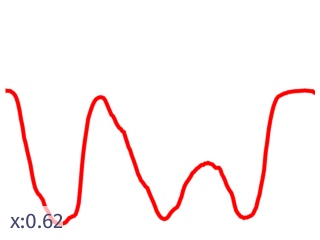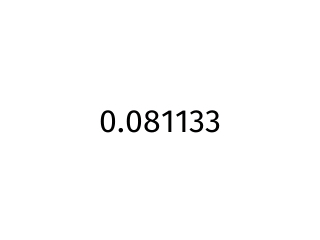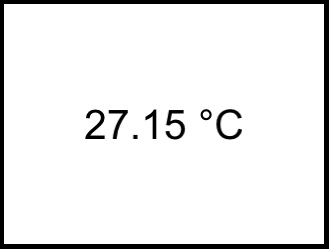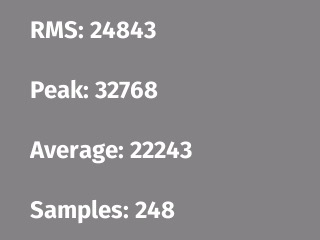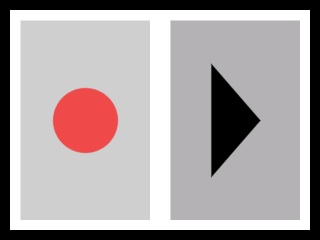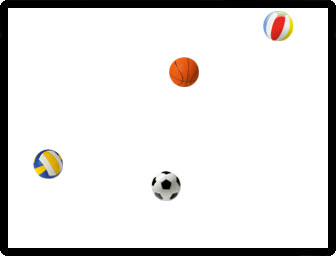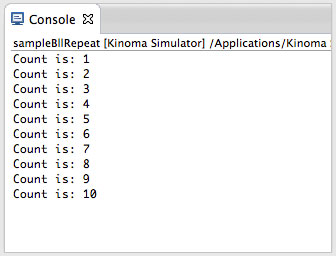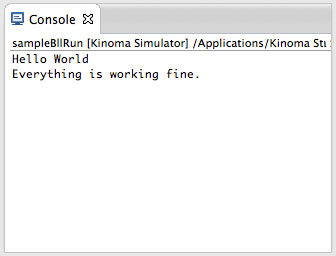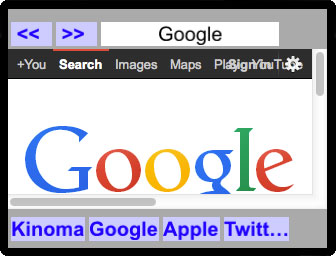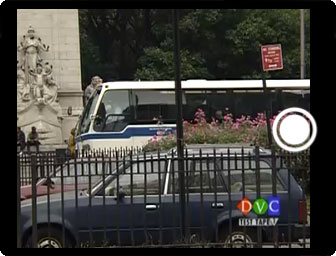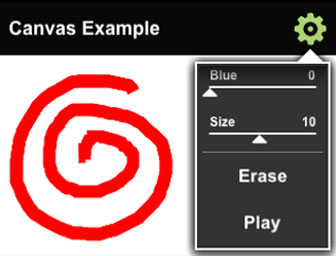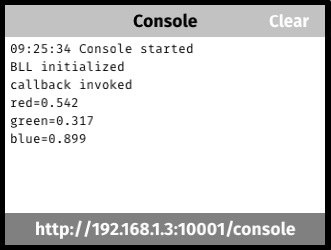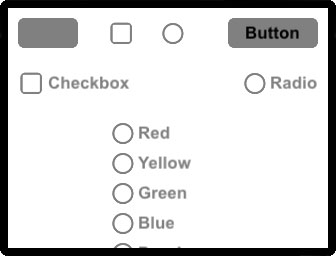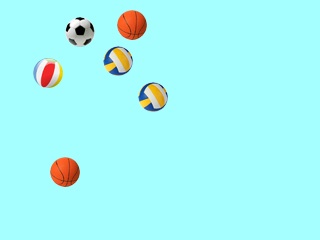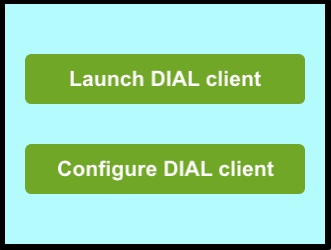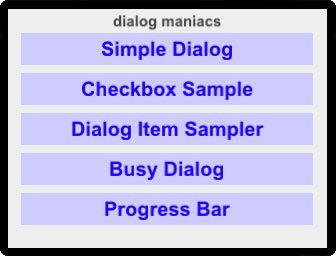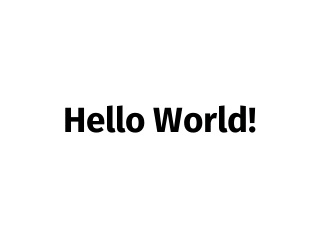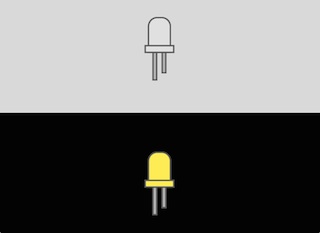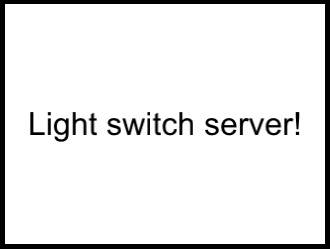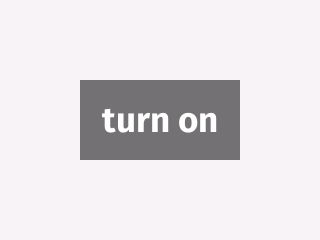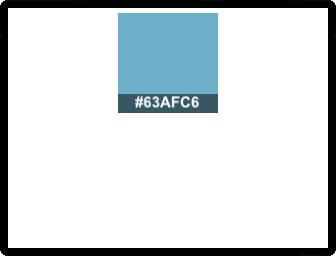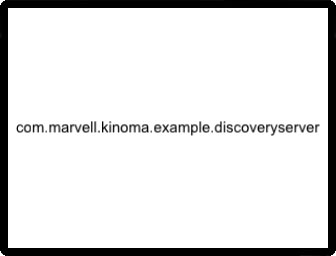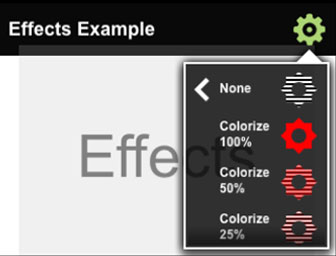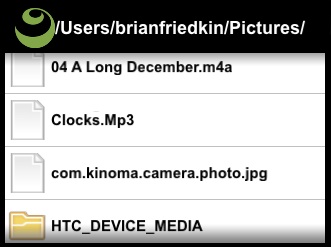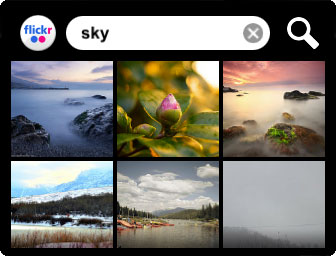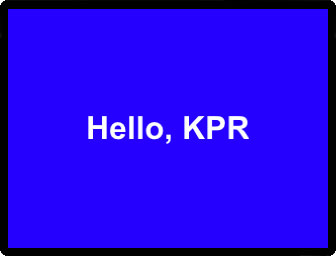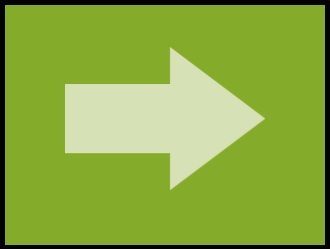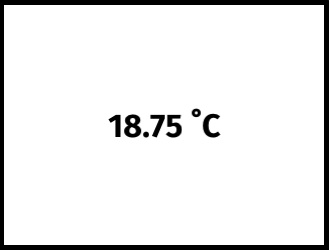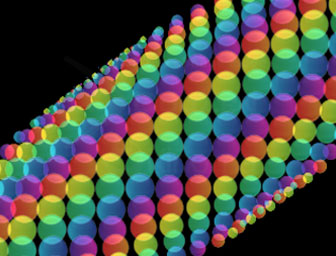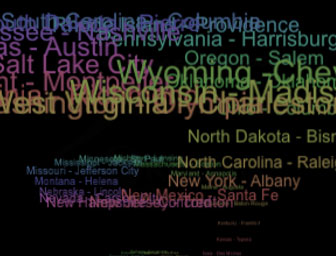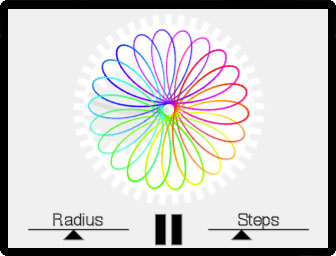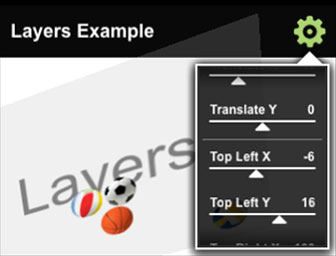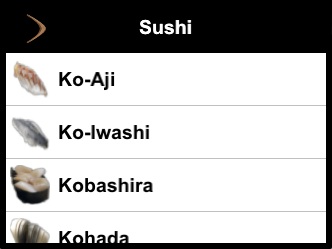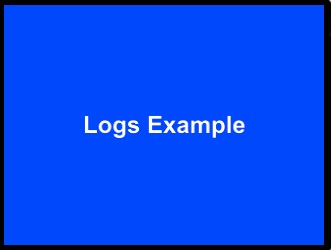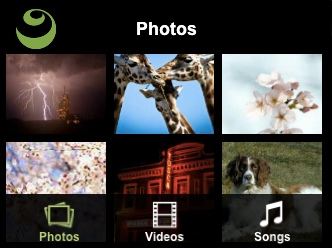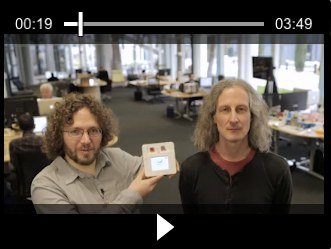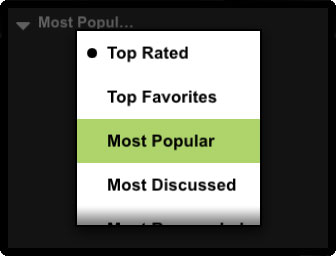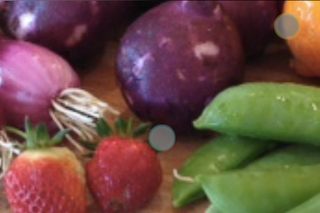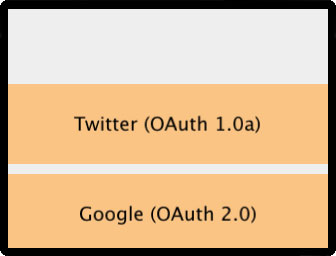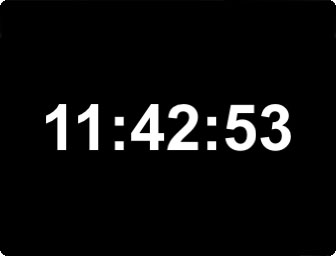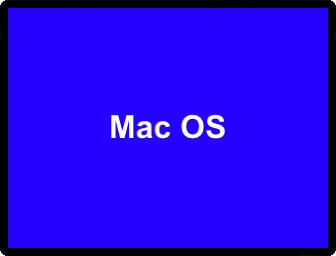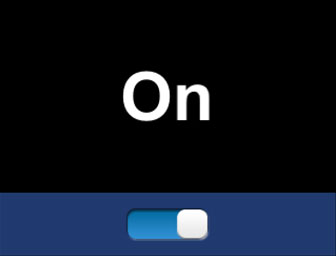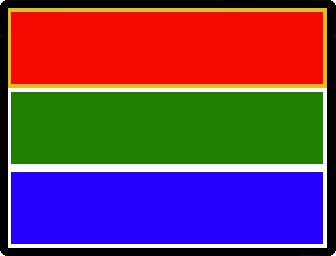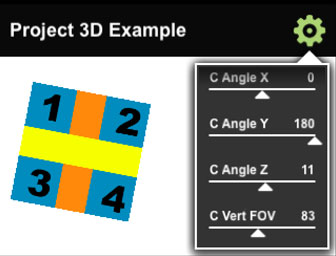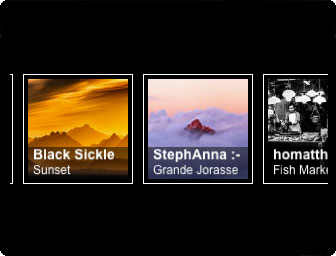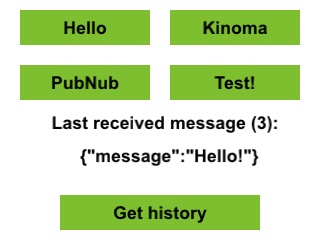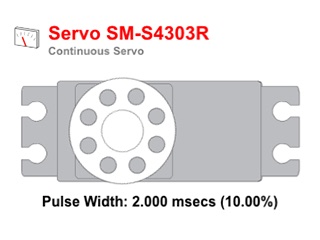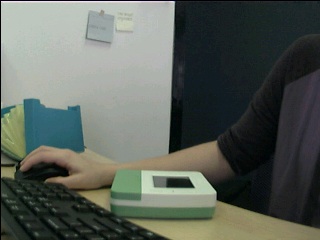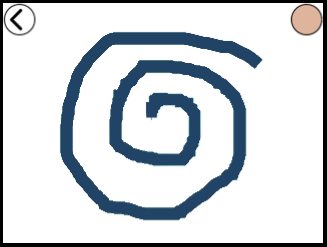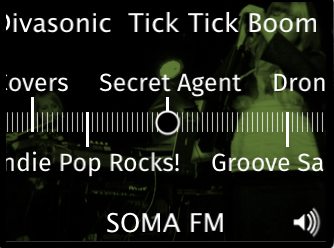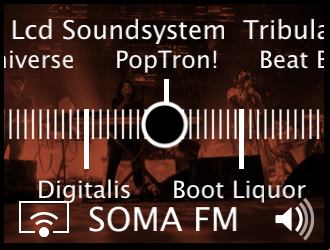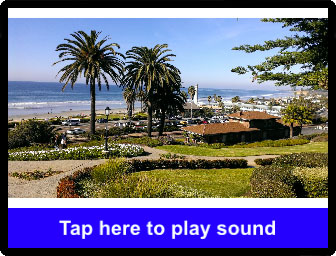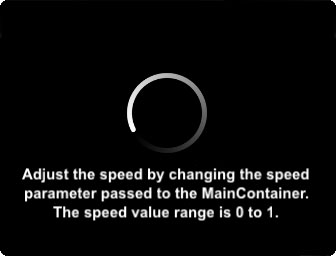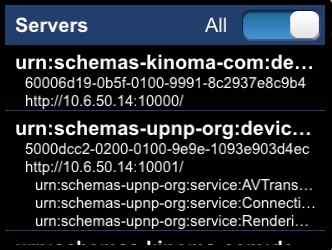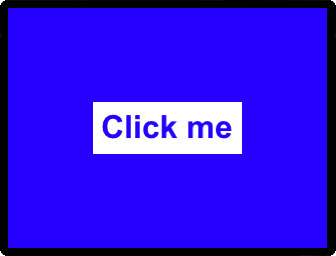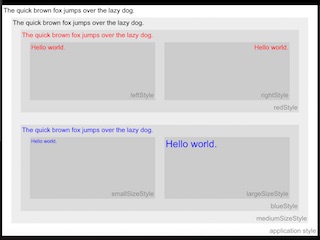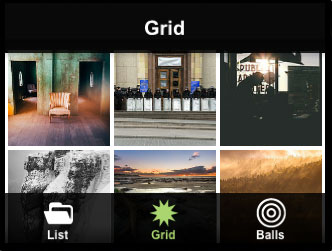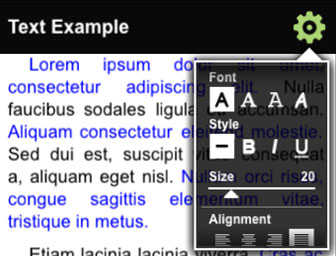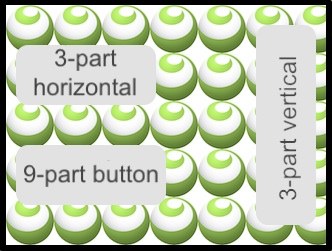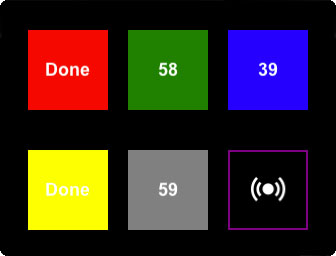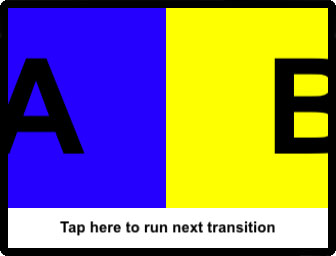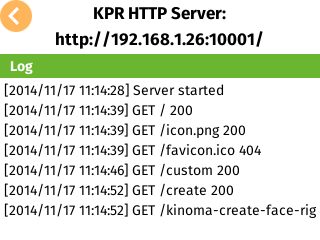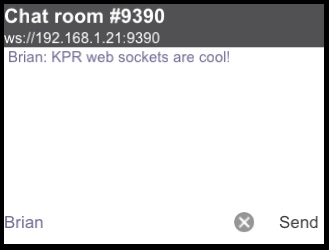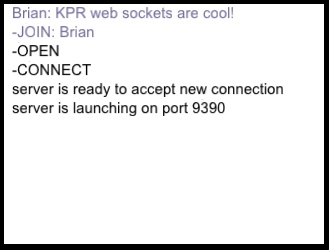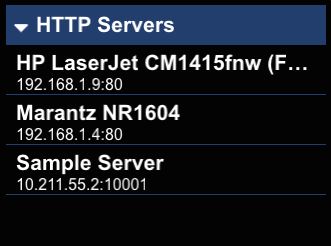This sample uses two different BLLs. One BLL communicates with two potentiometers and sends their readings to the main thread, where they are interpreted as XY coordinates. Lines are drawn between the coordinates to make pictures. A second BLL gets readings from an accelerometer, and when these readings exceed a threshold, the drawing is erased.
***
This sample uses a BLL to poll values from an analog sensor. It graphs these values using a KPR Canvas object.
***
This sample sends HTTP requests to the Xively API to upload sensor data to a stream. The values are read from an analog sensor. Before running the app, sign up for a free Xively account and replace the dummy text in the code with your API Key, Feed ID and Sensor ID.
***
Stripped down app that prints a value from an analog input pin onto the Kinoma Create's screen. Demonstrates how to implement an analog pin BLL in KinomaJS.
***
This sample shows how to implement a BLL to read from an analog temperature sensor (TMP36 in this case) and display the results to the Kinoma Create's screen.
***
This sample monitors the audio level using the microphone. The audioin BLL records audio samples, which it uses the calculate the peak and average sample levels, as well as the power level (RMS). The results are displayed in realtime by the application, which also adjusts the screen color in real time: black for quiet, white for loud, and grays in-between.
***
Demonstrates how to record and play up to 30 seconds of audio with Kinoma Create’s built-in microphone and speaker.
***
Bouncing ball animation example. Each ball is created as a content using different variants from an image skin. The balls travel by changing the content coordinates over time. This example is written using the KPR ECMAScript programming APIs and demonstrates how to use image skins and content timers.
***
Phone application which implements a Bing Image search. Image thumbnail search results displayed in a photo grid. Tapping an image thumbnail expands to full size. Note - This example requires the 'accountKey' variable set to a valid Windows Azure Marketplace account key associated with a Bing Search API subscription.
***
A sample that demonstrates how to repeatedly run a Kinoma Blinking Light Library (BLL). This is useful when, for instance, polling a sensor. The example calls a BLL that traces to the console 10 times and the stops the repetition.
***
A sample that demonstrates how to run a Kinoma Blinking Light Library (BLL) once. This sample shows how to pass parameters to a BLL, receive them in the BLL, and get results back from a BLL.
***
This example demonstrates how to implement an embedded web view container. The code embeds the web view with a browser container. This example demonstrates how to display a web page in the browser, support browser forward/backwards navigation, implement callbacks when the web page is loading/loaded, display a busy indicator using the mobile framework and use anchor references to containers. Note that the browser container is not available on Windows or Kinoma Create.
***
A simple camera app supporting live preview and capture. This example demonstrates how to integrate the camera media reader with a picture container, use the Files object to write the captured image to storage, implement screen transitions, detect the platform at runtime, adapt container layouts to device orientation changes, use canvas to implement a button and play one-shot sounds. Note - camera support is currently not supported on Kinoma Create, but this app includes a mockup implementation for the Kinoma Studio desktop simulator.
***
This mobile framework example demonstrates how to use the HTML 2D Canvas API. Tap the settings icon to select the drawing color and line thickness. The main container provides a 2D canvas to draw on. Select the 'Play' option from the settings menu to replay your drawing. This example shows how to use the Kinoma ECMAScript API to build and draw on a HTML Canvas 2D Context.
***
This sample application demonstrates how to display a simple console for logging debugging messages on Kinoma Create. New messages are added to the end of the console log and auto-scrolled into view. The console log can also be viewed in a web browser. Refer to the source code for details.
***
This example demonstrates how to integrate mobile framework buttons and behaviors into your application. Button types include push, checkbox, radio and radio group.
***
This Kinoma Create application is the remote DIAL client for the dial-remote example application. The application can be launched, quit and configured by the dial-remote app. DIAL client applications can receive launch configuration parameters by supplying a /dial handler. The parameters are delivered is the handler's message query property. The number of balls displayed can be configured by the dial-remote app.
***
This mobile framework application demonstrates how to use KPR DIAL to remotely launch, configure and quit the dial-client application installed on Kinoma Create. The dial-client application must be installed on Kinoma Create. KPR DIAL uses SSDP to discover DIAL servers and DIAL requests are issued to the remote DIAL server. The target DIAL application name is the KPR application id. DIAL uses a HTTP POST to launch applications. The body of the request contains the parameters passed to the app.
***
This example demonstrates how to setup and display mobile framework dialogs. Various common controls are integrated into the dialog samples and selected values are output when the dialogs are dismissed. Dialogs are built from a list of items returned by the onDescribe() dialog behavior handler function.
***
Uses a digital pin to read input from a physical button. When pressed, it triggers an event in the application which removes a letter from the string 'Hello World!' on the Kinoma Create's screen. Demonstrates the set up and integration of a digital input pin BLL in KinomaJS.
***
This client app runs with the "Digital-Light-Websockets-Server" sample. It acts as a companion app that can switch on and off an LED hooked up to the server-side Kinoma Create. This example shows how to discover servers using the built-in SSDP support, create and invoke messages to the server using websockets, and how to keep the UI of multiple client apps in sync with the server.
***
This server app runs with the "Digital-Light-Websockets-Client" sample. This example shows how to connect to one or more clients using the built-in SSDP support and implement a BLL to turn on and off an LED in response to client commands sent via websockets. The server keeps all the clients synced with the state of the LED.
***
Uses a digital pin to turn on and off an LED when a button is pressed on screen. Demonstrates the set up and integration of a digital output pin BLL in KinomaJS.
***
This client app is intended to be run simultaneously with the "Device Discovery Server" example and demonstrates how to build a companion app that discovers and interacts with a device. The client discovers all "com.marvell.kinoma.example.discoveryserver" servers on the same network. For each server discovered, the client displays a color swatch in a vertically scrolling container. The color is requested from the server by invoking the server's /color handler. The list is updated on-the-fly as servers are discovered and lost. KPR provides device discovery via built-in SSDP support. This example shows how to discover servers using the built-in SSDP support, create and invoke a cross-application message, and how to dynamically build a scrolling container of items.
***
This server app is intended to be run simultaneously with the "Device Discovery Client" example and demonstrates how to implement a discoverable device. The app/device is made discoverable by setting the "shared" application property to true. The "color" handler is called remotely by the client and returns a JSON object containing a CSS color string.
***
This mobile framework example demonstrates how to build and apply a variety of effects to KPR layers and pictures. Tap the settings icon to display and select from a scrolling menu of effect types. The effect is applied to the ‘Effect’ layer. Tap the ‘Play’ button at the bottom of the menu to apply the selected effect to a bouncing balls animation. This example shows how to build and apply KPR effects using the Kinoma ECMAScript API.
***
This mobile framework example demonstrates how to use the global KPR Files object to iterate local files and directories. The application displays the results in a scrolling list view and provides for deep browsing into nested directories. In addition, previews are supported for image, audio and video files. This example is useful for understanding how to use the Files iterator to iterate over a directory, distinguish between file and directory results, command and screen handler behaviors and building scrolling list based views.
***
This application demonstrates how to use the global KPR Files object. KPR Files provides APIs for reading and writing text, binary, JSON and XML files, and manipulating/iterating directories. In addition, KPR Chunk is introduced. Chunk is an object that wraps a memory block.
***
This sample code demonstrates how to implement an interactive scrolling photo thumbnail grid. Tapping the photo thumbnail opens the full size image using a zoom transition. The image thumbnails are retrieved from a Flickr public feed using a tag search. The resulting data set is delivered in JSON format. This is a good example of how to display images, adapt the layout to device orientation changes, use tool buttons or swipe to navigate between photos, invoke a message to fetch data from a REST API and mobile framework screen open/close transitions.
***
A minimal application that creates a full-screen container and displays the text "Hello, KPR". Tapping the container changes the background color. Useful for understanding how to build a basic KPR application.
***
This application changes the MainContainer's skin to the color sensed by an RGB color sensor. R, G, and B readings are sent from the BLL to the main thread, in which they are converted to hex.
***
BLL and sample application for the Hover board touchless gesture sensor from http://hoverlabs.co. Includes a BLL simulator for use in Kinoma Studio and device BLL for use on Kinoma Create. Demonstrates how to write a BLL that uses both I2C and Digital pins, and that changes the direction of Digital pins at runtime.
***
Obtains the current temperature from an I2C temperature sensor and displays it on the Kinoma Create's screen. Demonstrates the set up and integration of an I2C BLL in KinomaJS.
***
This ECMAScript API example displays a synchronized animation built with 256 balls/sprites. Each sprite’s position and size is changed every screen update. A content clock is used to update the display every screen refresh. Tap the screen to change the animation mode. This example shows how to use KPR content clocks, textures/skins, behaviors and content coordinates to achieve full frame rate animations.
***
This ECMAScript API example displays a synchronized vortex animation built with text sprites. Each sprite’s position and text size is changed every screen update. A content clock is used to update the display every screen refresh. Tap the screen to change the animation mode. This example shows how to use KPR content clocks, textures/skins, styles, behaviors and content coordinates to achieve full frame rate animations.
***
Uses Canvas 2D to implement a virtual hypotrochoid device. Custom sliders control the radius and steps. This application demonstrates how to use canvas containers to render 2D drawing contexts, delegate and notify behaviors using container.distribute, and implement a basic touch slider control.
***
Uses Canvas 2D to implement a virtual hypotrochoid device. Custom sliders control the radius and steps. This application demonstrates how to use canvas containers to render 2D drawing contexts, delegate and notify behaviors using container.distribute, and implement a basic touch slider control.
***
This mobile framework application demonstrates how to build a scrolling list view in KPR. An HTTP request is issued to a web service that returns a JSON array of items. The items are loaded and displayed in the list. Tapping a list item opens a detailed item view. The application also demonstrates how to use a KPR layout to adapt the screen layout on device orientation changes.
***
This example demonstrates how to use the Kinoma Create built-in logging support to capture trace output into a log file. Log files can be viewed and/or removed using the built-in Logs app.
***
This mobile framework application demonstrates how to access the core media library on iOS, Android and Mac OS platforms to display photos and play media files. The application uses a tabbed view to display photo/video thumbnails and songs. Tapping a media item opens a dedicated media viewer screen. KPR messages are used to request the media items. Note that media library support is not currently available for Kinoma Create or Windows.
***
This mobile framework application shows how to build a media player using the KPR Media object. Media transport controls are provided to start, stop and seek the media. The controls are displayed over the video and automatically hide/show when needed. Tapping the screen displays the controls. The current play time and duration are displayed and updated. This example demonstrates how to integrate KPR media playback, content timers, implement skin-based buttons and transitions.
***
This example demonstrates how to use a mobile framework menu button. The menu button displays the currently selected item in an active label. When tapped a modal menu of choices is displayed. The newly selected item is returned to the caller using a handler.
***
This example demonstrates how to use features of the MultiTouch Library to create an interactive image viewer suitable for selecting a cropping area from an image. The image may be panned, zoomed, rotated, tossed, with some animated constraints applied. Interactive gestures include tapping, press and hold, drag, toss, and two finger pinching. The sample's comments discuss the framework used including the TouchStateMachine, and TouchBehavior.
***
This example demonstrates how to implement OAuth 1.0a (Twitter) and OAuth 2.0 (Google) browser-based login and authentication. The browser is embedded in a web view container. The sample code is useful for understanding how to use a browser container, mobile framework buttons, handlers to invoke HTTP requests and parse responses and how to implement pure ECMAScript modules with exported methods. Note that the browser container is not available on Windows or Kinoma Create.
***
This example uses a layout container to demonstrate how to adapt layouts to device orientation changes. KPR calls the onMeasureVertically and onMeasureHorizontally methods in layout containers when the device orientation changes. The example dynamically changes the container contents based on the current orientation.
***
Basic digital clock driven by a periodic update implemented by a pair of handlers. The time handler notifies the application of the time change and then invokes the delay handler to wait 1/2 second. Once the delay has completed the time handler is invoked again. The technique is commonly used by applications that require periodic polling of a resource.
***
A minimal application that reads and displays the host platform string read from system.platform. Applications can query the platform string to wrap platform specific code.
***
This application demonstrates how to use a KPR port object to implement a simple toggle switch. Tap the switch to toggle between the on and off states. The toggle state is displayed as text by another KPR port object. Various KPR port APIs are covered by this example, including drawImage, drawLabel, fillColor and invalidate.
***
This sample demonstrates how to implement preferences that persist across application launches. The selected color swatch is stored across runs. The model.readPreferences function reads stored preferences. The optional third parameter can be used to initialize the preference value the first time. The model.writePreferences function saves the preferences. This example is also useful for learning how to build a container hierarchy using the KPR ECMAScript programming interface.
***
This example demonstrates how to use the projectImage function of the port object. The projectImage function allows a 3D projection to be defined in an intuitive way. Imagine holding a sheet of paper in one hand and a camera in the other. The paper would correspond to a 2D texture, and what the virtual camera sees is projected onto the port. The projectImage function takes 3 parameters: a texture, a billboard description, and a camera description. The billboard description includes the size of the texture, 3D position, and 3D orientation. The camera description is similar to the billboard, but also includes a field of view. Orientations are described as quaternions, which are complex, but the sample includes conversion to and from angles expressed in degrees. The sample presents sliders allowing the various billboard (b) and camera (c) parameters to be exercised.
***
Photo images are fetched from a Flickr feed using a proxy handler which returns array of photo objects. A proxy handler is often used to filter data returned from a web service into a simplified format for use by the host application.
***
This application sends and receives JSON messages using the PubNub messaging service. It provides a good starting point to learn how to add device-to-device and device-to-web communication to your application. PubNub provides low latency delivery of messages through the cloud. This application includes a full KinomaJS version of PubNub's JavaScript API.
***
Rotates a 360˚ continuous servo using a PWM pin. Demonstrates the set up and integration of a PWM BLL in KinomaJS.
***
This sample uses red/green/blue sliders to control the color of an RGB LED. The LED is controlled by PWM pins. Each slider is a KPR Canvas object that triggers an onChanged event when you move it to a new position.
***
An example that captures from a serial digital camera (VC0706) and displays photographs on the screen when a button (connected to pin 53) is pressed. At startup, the main thread waits for three affirmative Messages back from the camera BLL (one after initialization, one after setting the compresion and one after setting the image size). If all goes well, the MainContainer's skin turns green and the user can take a photo by pressing the button.
***
Sketchat is the contraction of sketch and chat. Sketchat allows to share a drawing surface between different Creates. The application demonstrates how to discover other Sketchat and how they can easily exchange information. When something is drawn on one Sketchat, it appears on all others. The color senor allows to select the color of the pen. The accelerometer allows to erase what has been drawn by shaking Create. When the application is stopped, its drawing dissapears from other Sketchat.
***
Displays a slideshow of images animating picture scaling, panning and opacity settings to implement Ken Burns style transitions. This example demonstrates how to dynamically add picture containers into the container hierarchy, distribute events to container behaviors, use a content timer to drive animations, display a busy indicator and invoke a HTTP request to fetch a photo collection from a public Flickr feed.
***
This mobile framework Kinoma Create example streams live radio from the SomaFM service. Channels are selected using a touch controlled scrolling tuner. A music artist image collage is displayed and updated on track changes. This example demonstrates how to use KPR media to play HTTP streams, build custom UI elements with canvas, use a proxy handler to fetch data from a web service, and use KPR effects and layers to implement an animated image collage. The SomaFM player also supports KPR DIAL and can be controlled remotely by the SomaFM remote phone application.
***
This mobile framework phone application streams live radio from the SomaFM service and can be used to remotely control the SomaFM player application. Using KPR DIAL, this example discovers the SomaFM player application running on Kinoma Create and can change channels and the volume level remotely. Channels are selected using a touch controlled scrolling tuner. A music artist image collage is displayed and updated on track changes. This example demonstrates how to use KPR media to play HTTP streams, build custom UI elements with canvas, use a proxy handler to fetch data from a web service, and use KPR effects and layers to implement an animated image collage.
***
Displays a mockup camera preview with shutter button. Tapping the button plays a shutter sound. The application calls sound.play to play a WAVE file. This application also demonstrates how to use a transition to simulate the shutter closing and opening.
***
Displays a spinning busy indicator by rotating a custom graphic using a periodic timer. The indicator is displayed half size by setting the graphic's picture scale and origin properties.
***
A simple application that shows SSDP usage. The application starts a HTTP server on port 1234, registers it with the name service named "KPR Server". It also looks for available HTTP servers on the local network.
***
This example demonstrates how to use content states to change a button's background and text colors when tapped. The text color is defined by the text style states. The button background color is defined by the skin states.
***
This example demonstrates how KPR cascades styles in the container hierarchy. A content inherits the characteristics of its container style when the characteristics are undefined in the content style. In this example, the applicationStyle defines a style for the root of the container hierarchy and nested containers build on the applicationStyle by overriding various style characteristics, including point size, alignment and color. Note: This example is best viewed on a tablet-sized screen or simulator.
***
This example displays a vertical scrolling column of text formatted with a wide variety of styles. Usage of all the common text style attributes are demonstrated, including font, text style, point size, alignment, leading, color and margins.
***
This mobile framework example demonstrates how to build a tabbed UI screen. Each tab opens a different style pane. The tabs are placed in the screen footer area and built using the mobile framework screen's TabFooter object and skinned using the default sample theme tab skins. The tab-to-tab transition is managed by the mobile framework TabListSwapTransition. You can customize the tab look and behaviors by replacing and/or overriding these objects. For example, you can use the mobile framework screen's TabLine object to implement a tab bar that can be placed anywhere on the screen and without icons.
***
This mobile framework example demonstrates how to use the ECMAScript API to get and set various KPR Text and Style properties, including font, point size, style, alignment, indentation and margins. The example also shows how to implement tappable text links and use text spans to display multi-styled text blocks. Tap the settings button to choose from a scrolling menu of text and style options.
***
This example demonstrates how to use tiled skins to fill content. Examples of nine part and three part horizontal/vertical tiled skins are provided. The nine part container is a button that changes color (state) when tapped. Additionally this example shows how to use a layer to display rotated text.
***
This example demonstrates how to use different timer techniques: One-shot, interval, repeating, handler.wait and container.wait. An interval timer is used to animate skin states.
***
This example demonstrates how to use the Transitions library to configure and use a variety of transitions. The host application can further customize each transition by overriding the duration, easing function used for pacing time and specifying whether or not the former content should be removed once the transition completes.
***
This sample application demonstrates how to build a simple web server with KPR. Setting the application 'shared' property to 'true' shares the application as a service on the local network and enables the HTTP server. The sample shows how to support GET and POST requests and how to serve static and dynamic web pages with images. Transactions are displayed in a scrolling log view.
***
This mobile framework application demonstrates how to implement a web socket client in KPR. Coupled with the websocket-server example, this application implements a web socket based chat client. The client discovers and connects to the server using SSDP and exchanges text messages with the server. This application is useful for understanding how to integrate web sockets, use SSDP to discover server devices, build UIs with editable text fields and transitions.
***
This application demonstrates how to implement a web socket server in KPR. Coupled with the websocket-client example, this application implements a web socket based chat server. The client discovers and connects to the server using SSDP. Once the connection is established, the client exchanges text messages with the server. This application is useful for understanding how to build a web socket server and use KPR Text and Scroller objects to display a scrolling list of messages.
***
This example demonstrates how to issue an HTTP request to the Open Weather Map service and use the KPR DOM parsing APIs to parse the XML response. The temperature for the requested city is displayed. This example shows how to invoke a HTTP request to a web service, parse the XML response, display a busy indicator while waiting for the result and how to implement a tappable link which opens in the device browser. Note that browser support may not be available on all platforms.
***
A simple application that shows Zeroconf usage. The application starts a HTTP server on port 1234, registers it with the name service named "KPR Server". It also looks for available HTTP servers on the local network. Note: Zeroconf is not yet supported on Windows.
***These examples released under the Apache Foundation license.
